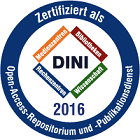Schmuck, Jonas: Electrophysiological Indicators of Selective Attention to Affect. - Bonn, 2025. - Dissertation, Rheinische Friedrich-Wilhelms-Universität Bonn.
Online-Ausgabe in bonndoc: https://nbn-resolving.org/urn:nbn:de:hbz:5-86544
Online-Ausgabe in bonndoc: https://nbn-resolving.org/urn:nbn:de:hbz:5-86544
@phdthesis{handle:20.500.11811/13707,
urn: https://nbn-resolving.org/urn:nbn:de:hbz:5-86544,
doi: https://doi.org/10.48565/bonndoc-721,
author = {{Jonas Schmuck}},
title = {Electrophysiological Indicators of Selective Attention to Affect},
school = {Rheinische Friedrich-Wilhelms-Universität Bonn},
year = 2025,
month = nov,
note = {For several decades, the interplay between attention and emotion has attracted significant interest in the fields of neuroscience and psychology. While much is known about the ability of emotional content to involuntarily capture human attention, less research has focused on the voluntarily directed attention to (the valence of) specific emotional stimuli. In order to better understand the underlying neural mechanisms of this highly dynamic process, researchers frequently rely upon event-related potentials (ERPs), which allow the separation of distinct temporal processing stages. The few studies on this specific topic have demonstrated that emotional stimuli benefit from selective attention to valence primarily during late, controlled processing. However, recent work has suggested that selective attention may also modulate emotional processing during early, perceptual stages. The present dissertation therefore aimed to clarify the nature of this previously observed effect and to generalize the observations to other types of emotional stimuli.
To this end, a series of four ERP studies was conducted using an experimental task in which attention was selectively directed toward one particular valence (e.g., positive). In Study I, the influence of lexical word properties on the early processing of selectively attended emotional words was investigated. In Study II, the neural processing of emotional words whose valence had not been selectively attended was explored in greater detail and integrated into theories on affective information processing. In Study III, emotional faces were used as stimuli in order to examine potential differences in neural processing during the selective attention to affect compared to words and pictures. In Study IV, the influence of participant gender and face gender on the processing of emotional faces whose expression was selectively attended was explored.
The combined findings demonstrate that selective attention to affect partially elicits analogous neural processing for emotional words and faces, while also revealing notable differences between the two stimulus categories. Most importantly, it was confirmed that the perceptual processing of emotional stimuli at very early stages can be modulated by selective attention. While this effect appeared to be more pervasive for words, a particularly interesting pattern was also identified for faces under specific conditions. On the other hand, subsequent holistic visual stimulus processing was characterized by attention-independent processing of the emotional content. At mid-latency ERPs, there was moderate evidence for an attention-sensitive enhancement of emotional face processing, presumably indicative of the special role of emotional faces in human social life. Finally, the largest effects of task-related attention as well as a sustained attentional bias toward unattended negative stimuli manifested during late processing stages. As a whole, this work extends previous research and provides valuable insights into the electrophysiological signatures of top-down selective attention to affect and its interaction with the bottom-up processing of emotional stimuli.},
url = {https://hdl.handle.net/20.500.11811/13707}
}
urn: https://nbn-resolving.org/urn:nbn:de:hbz:5-86544,
doi: https://doi.org/10.48565/bonndoc-721,
author = {{Jonas Schmuck}},
title = {Electrophysiological Indicators of Selective Attention to Affect},
school = {Rheinische Friedrich-Wilhelms-Universität Bonn},
year = 2025,
month = nov,
note = {For several decades, the interplay between attention and emotion has attracted significant interest in the fields of neuroscience and psychology. While much is known about the ability of emotional content to involuntarily capture human attention, less research has focused on the voluntarily directed attention to (the valence of) specific emotional stimuli. In order to better understand the underlying neural mechanisms of this highly dynamic process, researchers frequently rely upon event-related potentials (ERPs), which allow the separation of distinct temporal processing stages. The few studies on this specific topic have demonstrated that emotional stimuli benefit from selective attention to valence primarily during late, controlled processing. However, recent work has suggested that selective attention may also modulate emotional processing during early, perceptual stages. The present dissertation therefore aimed to clarify the nature of this previously observed effect and to generalize the observations to other types of emotional stimuli.
To this end, a series of four ERP studies was conducted using an experimental task in which attention was selectively directed toward one particular valence (e.g., positive). In Study I, the influence of lexical word properties on the early processing of selectively attended emotional words was investigated. In Study II, the neural processing of emotional words whose valence had not been selectively attended was explored in greater detail and integrated into theories on affective information processing. In Study III, emotional faces were used as stimuli in order to examine potential differences in neural processing during the selective attention to affect compared to words and pictures. In Study IV, the influence of participant gender and face gender on the processing of emotional faces whose expression was selectively attended was explored.
The combined findings demonstrate that selective attention to affect partially elicits analogous neural processing for emotional words and faces, while also revealing notable differences between the two stimulus categories. Most importantly, it was confirmed that the perceptual processing of emotional stimuli at very early stages can be modulated by selective attention. While this effect appeared to be more pervasive for words, a particularly interesting pattern was also identified for faces under specific conditions. On the other hand, subsequent holistic visual stimulus processing was characterized by attention-independent processing of the emotional content. At mid-latency ERPs, there was moderate evidence for an attention-sensitive enhancement of emotional face processing, presumably indicative of the special role of emotional faces in human social life. Finally, the largest effects of task-related attention as well as a sustained attentional bias toward unattended negative stimuli manifested during late processing stages. As a whole, this work extends previous research and provides valuable insights into the electrophysiological signatures of top-down selective attention to affect and its interaction with the bottom-up processing of emotional stimuli.},
url = {https://hdl.handle.net/20.500.11811/13707}
}






